The Stull shale member of the Kanwaka formation crops out extensively in Nebraska, Iowa, and Kansas. The Stull is often a medium gray, silty shale that has a diverse fauna that includes corals, bryozoans, brachiopods, mollusks, arthropods and echinoderms. Many of these fossils are large and have robust, ornamented shells that suggest they lived in fairly well oxygenated, shallow water near an ancient shore.
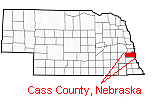
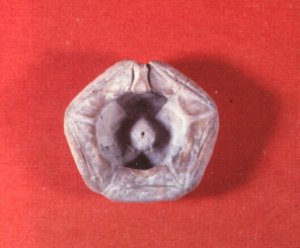
Echinoderms from the Stull Shale
In Heckel's cyclothemic model, the Stull Shale is a near shore shale that was deposited in fairly shallow, fairly warm water. Crinoids that lived in this kind of environment where food supplies were abundant tended to develop fairly large crowns with thick, often ornamented plates. Pabian and Strimple (1970, 1985) used the crinoids from the Stull Shale as a basis for what they first called a "Type I" and later a shallow water or near shore crinoid assemblage. Holterhoff (1988) further refined the near shore crinoid assemblages by showing that they often had complex, multi-branching, heavily pinnulated arms. The Stull shale also contains a diverse fauna of marine invertebrate fossils that includes corals, bryozoans, brachiopods, mollusks, arthropods, and other echinoderms.

Diphuicrinus
Description: "Diphuicrinus" sp., dorsal cup, summit view.
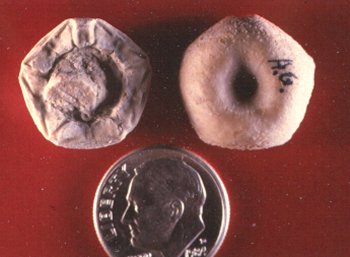
Delocrinus vulgatus
Description: "Delocrinus vulgatus" Moore and Plummer, dorsal cups, summit and basal views.
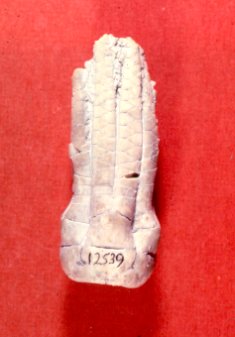
Delocrinus vulgatus
Description: "Delocrinus vulgatus" Moore and Plummer, crown, anterior view, height is approximately 65 mm.
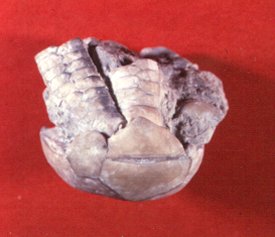
Delocrinus vulgatus
Description: Delocrinus vulgatus Moore and Plummer, partial crown, posterior view, cup diameter is approximately 30 mm.
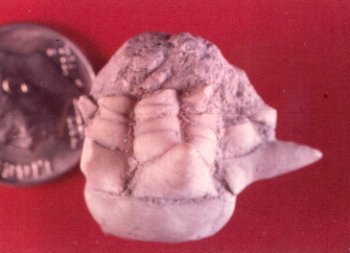
Delocrinus vulgatus
Description: "Delocrinus vulgatus" Moore and Plummer, immature partial crown, anterior view.
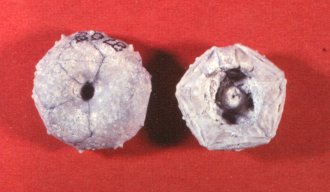
Graffhamicrinus magnificus
Description: "Graffhamicrinus magnificus" (Strimple), dorsal caps, basal and summit views, approximate diameter is 28 mm.
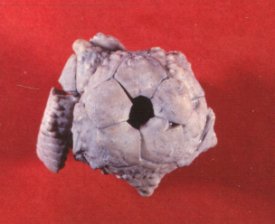
Graffhamicrinus magnificus
Description: Graffhamicrinus magnificus (Strimple), partial crown, basal view, cup diameter is approximately 28 mm.

Graffhamicrinus magnificus
Description: Graffhamicrinus magnificus (Strimple), partial crown, posterior view, cup diameter is approximately 28 mm.
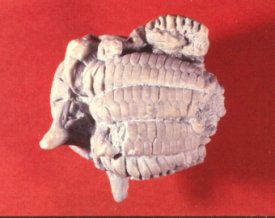
Graffhamicrinus magnificus
Description: Graffhamicrinus magnificus (Strimple), partial crown, basal v iew, cup diameter is approximately 35 mm.
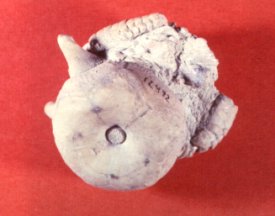
Graffhamicrinus magnificus
Description: Graffhamicrinus magnificus (Strimple), partial crown, summit view, cup diameter is approximately 35 mm.

Graffhamicrinus stullensis
Description: "Graffhamicrinus stullensis" (Strimple), dorsal cup with primibrachials attached, basal view, cup diameter is approximately 30 mm.

Parulocrinus blairi
Description: "Parulocrinus blairi" Miller and Gurley, dorsal cup, summit view, approximate diameter is 38 mm.
Bivalves from the Stull Shale
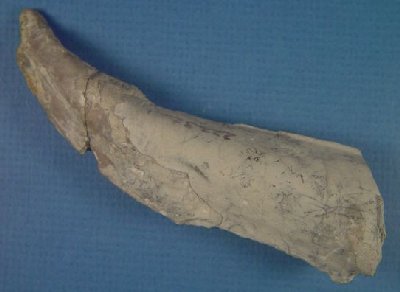
Aviculopinna sp.
Description: "Aviculopinna" sp. (Razor Clam).
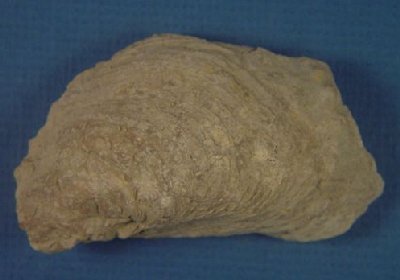
Myalina subquadrata
Description: Myalina subquadrata (Shumard)
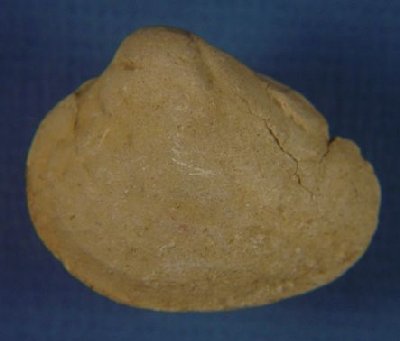
Schizodus sp.
Description: "Schizodus" sp.
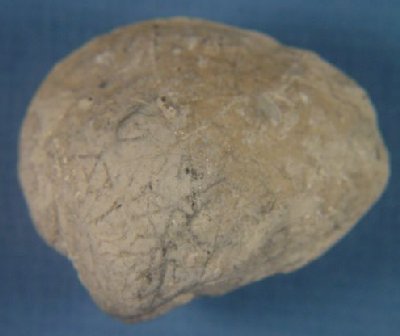
Schizodus wheeleri
Description: "Schizodus wheeleri" (Swallow), steinkern showing the internal surfaces of right and left valves.
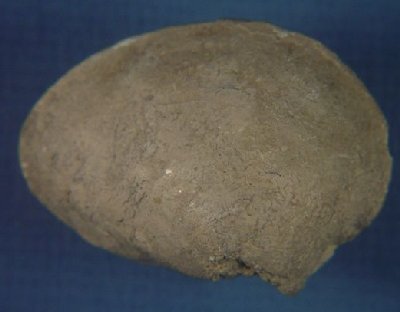
Schizodus wheeleri
Description: "Schizodus wheeleri" (Swallow), steinkern showing the internal surfaces of right and left valves.

Septimyalina perattenuata
Description: "Septimyalina perattenuata" (Meek and Hayden)
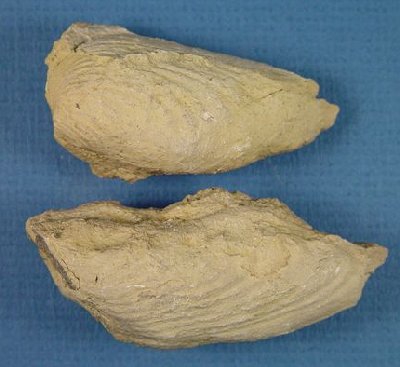
Wilkingia terminale
Description: "Wilkingia terminale", Burrowing Clam (Hall)
References & Acknowledgments
Most of the brachiopod specimens were provided by Bill Rushlau of the Nebraska Mineral and Gem club, Omaha. Digital camera images were made by Ed Schafer, Ralston Public Schools.
- Dunbar, C. O., and Condra, G. E., 1932. Brachiopoda of the Pennsylvanian System in Nebraska: Nebraska Geological Survey, 2nd Series, Bulletin 5, 377 p.
- Mudge, M. R., and Yochelson, E. L., 1962. Stratigraphy and paleontology of the uppermost Pennsylvanian and lowermost Permian in Kansas: U. S. Geological Survey Professional Paper 323, 207 p.
- Muir-Wood, H. M., and Cooper, G. A., 1960. Morphology, classification and life habits of the Productoidea (Brachiopoda): Geological Society of America memoirs 81, 447 p.
- Moore, R. C., (Editor), 1966. Treatise on invertebrate paleontology: Part H, Brachiopoda: University of Kansas Press and Geological Society of America, 1145 p.
- Schrott, R. O., 1966. Paleoecology and stratigraphy of the Lecompton Megacyclothem in the northern midcontinent region. University of Nebraska, Lincoln, unpublished PhD dissertation.
- Sturgeon, M. T., and Hoare, R. D., 1968. Pennsylvanian Brachiopods of Ohio. Ohio department of Natural Resources, Division of Geological Survey, Bulletin 63. 95 p.